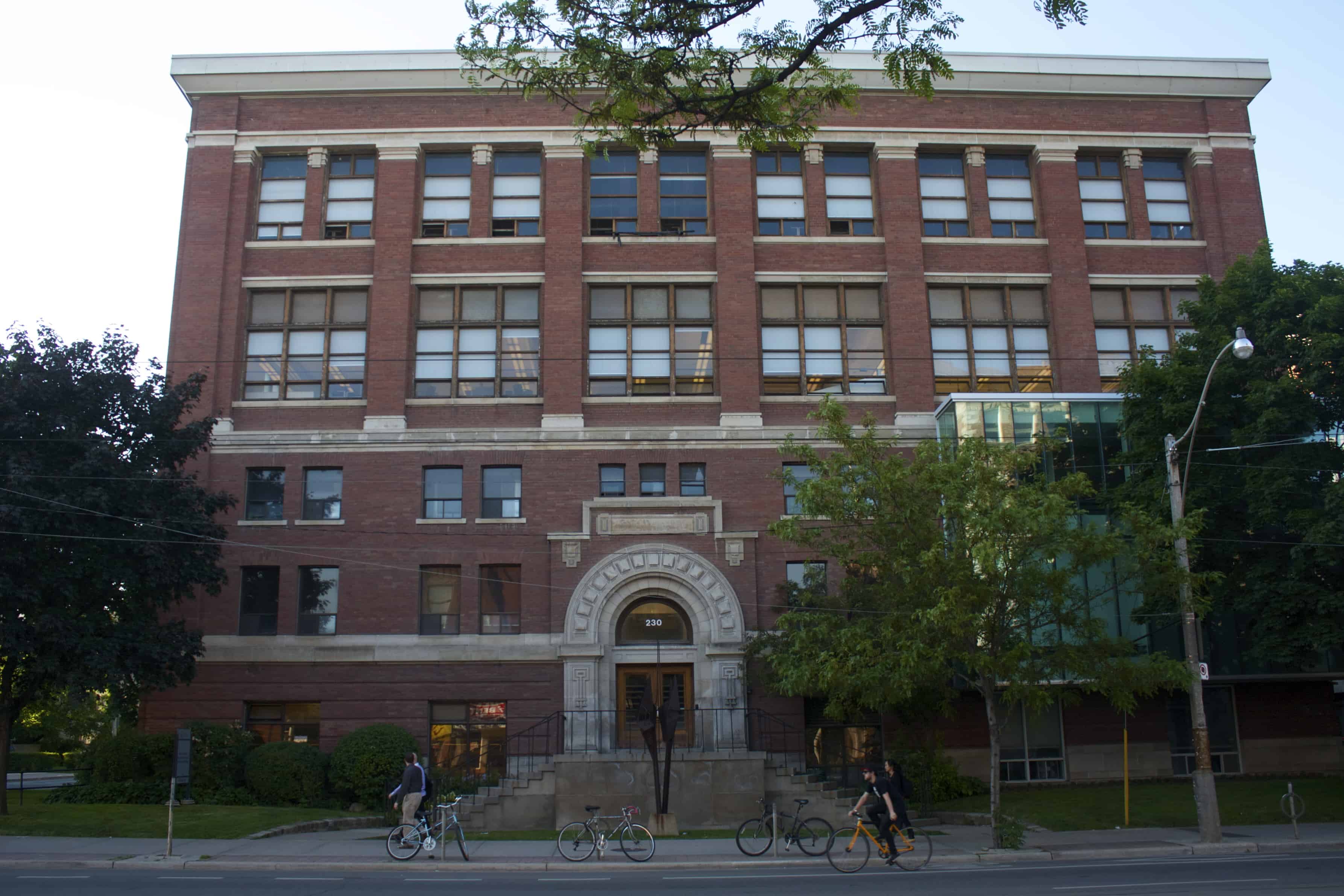Following decades of lobbying, the University Affairs Board has approved the operating agreement for the Student Commons, which will take up residence in the newly-vacated Faculty of Architecture building at 230 College St. Significant construction is required before the building will be operational, but the UTSU are hopeful that they will be able to open doors in fall of 2015.
First proposed in the 1960s, funding and planning problems resulted in the project being postponed several times. In 2007, a referendum was held to approve a levy to fund a student run space, which would serve as a central hub for student life. UTM and UTSC already have similar student-run spaces.
The building will house study areas, multi-faith spaces, eateries, work and meeting spaces, as well as student services. Two hundred and thirty College St., currently home to the Daniels Faculty of Architecture, Landscape, and Design, is the latest in a long string of potential venues.
The Commons will also be the future home of the UTSU, which would offer several new services in addition to the ones it already provides, including a copy shop, a food bank, an Academic Advocacy Office, and a bigger Good Food Box program. A workshop for engineering and architecture students, gardening space, student clubs offices, and public kitchen areas are other specialized areas that are included in the plans. The building was designed to not only address existing space issues, but also help enhance the experience of commuter students by serving as a central point on campus.
Questions around funding have usually been at the root of the various relocations and delays; in 2007, the UTSU finally proposed a student levy to pay for construction. Approximately two thirds of the costs of the commons will be covered by full time undergraduate students. The last third will be covered by the university.
The 2007 referendum was a binding agreement and the levy structure implemented then will continue to be applied in the future. In contrast with Victoria College’s Goldring centre, where graduating students were reimbursed because they would never be able to use the centre, there are currently no plans to pay back fees to students who paid the fee without having access to the centre. Once doors open, the current student levy will increase to $20.75, $14.25 for construction and $6.50 for operating and capital renewal.
The commons proposal is set to be addressed at the Board of Governing Council’s upcoming meeting on May 28, beginning the official approval process. The discussions, held in cooperation with the University’s offices of Facilities and Planning, will determine the exact costs, contract information, and other details.
“I am very proud to be a part of the executive team that will be helping to bring about the vision of the Student Commons,” said UTSU president Munib Sajjad. He highlighted the importance of the centre, stating that “St. George is one of only campuses in Canada that doesn’t have a student-run and managed building. As a student from Mississauga, where we do have a student centre, I can say that the benefits to campus life are enormous. Free, bookable, reliable space is absolutely necessary.”
Which clubs will receive space in the Student Commons, as well as how long construction will take, remains to be finalized.
During the UAB meeting, Aidan Fishman, a student governor, raised a number of concerns with the Agreement most significantly surrounding the composition of the management committee.
Fishman is concerned that a significant portion of the committee will be appointed by UTSU, either directly or through its clubs and levy groups. “It makes sense for these members to be elected” said Fishman, stating that the committee did not seem democratically accountable.
Fishman’s concerns echo those he has expressed about the UTM and UTSC Campus Councils. The UTSU wanted to appoint the student representatives on those councils, while Fishman fought successfully to have them elected.
Sajjad, in response, stated that the committee would be accountable, since the members who will represent clubs and levy groups will have already been elected with their respective groups to lead.
After the UAB meeting, in an interview with The Varsity, Fishman countered this, saying “But the people in clubs and levy groups were elected to run the club, not to sit on the management committee.” Chirag Variwa, another student governor on UAB added that: “The accountability behind this is troubling – if the services are run badly, the students don’t really have the power to change it.”
Fishman also detailed a concern with a clause in the memorandum agreement that states that the agreement on the Student commons is void if UTSU ceases to represent all undergraduates at U of T. “It sounds like a statement from the university — like they think fee diversion will never happen — because if it can happen, why did they put in a statement saying that if it does, it would make the commons void?”
With files from Vipasha Shaikh


